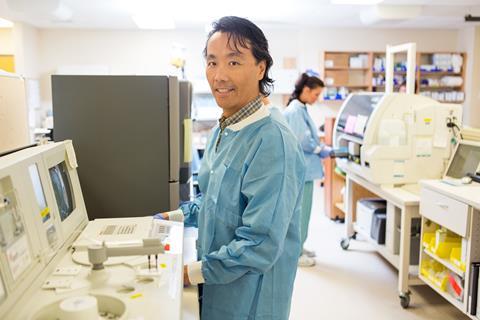Computerised control over equipment is streamlining research
Digitisation and electronics are increasingly eclipsing traditional methods – and it’s easy to miss the opportunity by refusing to get on board. Today, major chemical companies routinely use electronic lab notebooks, while universities and other institutions have lagged behind and are only now starting to follow suit. While bodies such as the UK Engineering and Physical Sciences Research Council have made some positive steps by allocating funding into mid-range facilities which can help make better use of scientific instruments, universities still face the balance of an ever increasing strain on resources and the need to keep on top of cutting-edge research in order to attract essential industrial funding.
Digital revolution
The benefits of digital chemical inventories will be pretty obvious to most. They make management easier from a logistical perspective and – thanks to electronic systems for managing hazardous substances and risk assessment becoming ever more common – improve safety, too.

But what about the management of laboratories themselves? In a small university lab with just a few occupants a weekly meeting will suffice to schedule use of equipment. With just a handful of instruments, it’s relatively straightforward to keep on top of maintenance, training and performance history. However, larger labs with more occupants and more equipment need something more. For facilities which comprise numerous, multi-site labs with regulatory requirements, a reliable management platform can only be a good thing.
The CMAC Future Manufacturing Research Hub is such a relatively complex facility. It comprises eight laboratories within the Technology Innovation Centre at the University of Strathclyde, UK, with more than 50 full-time lab occupants, in addition to a high number of visitors. It has more than 150 items of equipment (each valued between £5000 and £1 million).
For its staff, the need for digital management was obvious. As a result, the hub developed ULab, an in-house system to manage access, training, scheduling, maintenance, performance history and incident reports for the vast array of instruments for which it is responsible.
Primarily designed for equipment scheduling and sharing, ULab has evolved into a platform for coordinating training activities. Of course, this is just one example of such a system; however, the way it is used demonstrates how technology can be adapted to meet the demands of a busy laboratory.
The system has several innovative features. Each instrument can be assigned ‘super users’, who have administrative privileges to manage access and protect equipment (and staff!) from damage. ULab is also used to store electronic manuals, training materials and maintenance history, thus keeping important documents in one place. It can also be set to trigger reminders for calibrations, maintenance visits or warranty expirations. The most recent development for ULab is an incident reporting system, which provides users a direct route to the relevant person(s) if something goes wrong while building up a case history in order to avoid future users being hindered by repeat issues.
Improving efficiency
The value of equipment management systems extends beyond the immediate needs of the lab. One of their most important features is the visibility of how scientific instruments are being used. A key output from the 2010 Wakeham Review was: ‘The assessment processes of the Research Councils should encourage more intensive use of existing assets across the research base’. This was further supported by a 2012 review by the UK Higher Education Funding Council for England. Most of us have heard of cases where equipment is not being used optimally because a key member of staff having moved on, or that insufficient funds are unavailable for a critical repair and it’s easier to secure funding for a fancy new gadget than cover the maintenance costs for existing kit.
There are no easy solutions to these challenges but equipment management systems can definitely go a long way towards establishing a clear picture of how assets are being handled. If one piece of kit is being used flat-out, this is a strong case for potential duplication or an indication that a decent service contract might make sense. On the other hand, if an instrument is seeing little or no usage, why is it being allowed to take up precious lab space and could it be perhaps used by someone else?
Investing in a content management system requires up-front costs and a change in lab culture. Some aspects may even draw negative responses. But it would be hard to argue a case against them. As our working lives get busier, and the demands on our time become greater, making better use of our assets can only be a good thing. If equipment management systems can help reduce the constant strain on our resources, then surely it makes sense to embrace them.












No comments yet